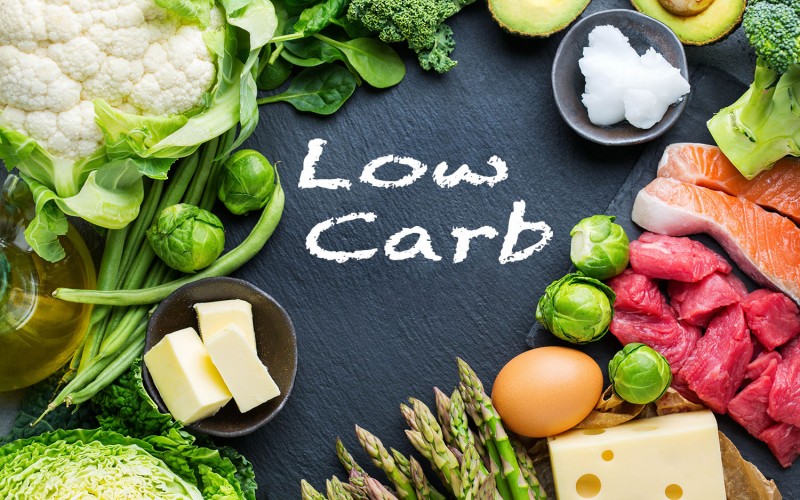
” Low-Carb” Dieting: Do I Need to Worry About Gluconeogenesis?
In recent years, the metabolic problems caused by excessive intake of simple carbohydrates such as added sugars and starches have become increasingly serious, and the World Health Organization and various national authorities have begun to promote the limitation of daily carbohydrate intake to reduce the risk of obesity, diabetes, and cardiovascular disease. But how low is “low-carb”, and is the lower the carbohydrate intake, the better?
How to Define a “Low-Carb” Diet?
Currently, there is no clear definition of “low-carb” in nutrition. Each country and region only provides reference values for various types of food, but there are no thresholds for “high” and “low”, and there are no unified international guidelines. If the recommended daily intake of carbohydrates in a region is 55%, then for the diet of that region, less than 55% of carbohydrates is considered low carbohydrate. However, being below this value does not necessarily mean a change in metabolism.
If metabolism is to be altered by reducing carbohydrate servings, dietary interventions for this purpose generally use amounts of no more than 50 g/day or less than 10% of total calories, such as the Atkins diet with 5% carbohydrate per day and the ketogenic diet with no more than 20 to 50 g/day of carbohydrate.
In other words, a diet with less than 50 grams of total carbohydrates per day on average is considered a low-carb diet. how much is 50 grams of carbohydrates? About two apples. Then you can’t have any more beans, root vegetables, grains, milk, nuts, protein powders, snacks, sauces, etc. It seems to be quite difficult to implement a real “low-carb”, after all, energy-producing carbohydrates are everywhere.
Does a Low-Carb Diet Have Any Effect on Metabolism?
All the sugar in the body comes from the diet, so when the carbohydrate source in the diet is insufficient, the availability of glucose decreases and the body produces two processes – gluconeogenesis and ketogenic.
What is Gluconeogenesis?
Gluconeogenesis, also known as glycogen isogenesis, is, as the name implies, “the production of sugar by an abnormal pathway,” a metabolic option that produces glucose from a non-carbohydrate pathway, primarily in the liver.
In normal metabolism, carbohydrates in the diet are digested and become blood glucose, and some of them are stored as glycogen by insulin. If the amount is too much, it will be converted into fat and stored. When the body needs it, such as during fasting and exercise, the liver takes the stored glycogen and uses it to maintain blood sugar levels through glycolysis (breakdown of glycogen).
However, when dietary carbohydrate intake is extremely low (less than 50 grams per day), or when fasting times increase, glycogen stores themselves cannot be maintained and availability is limited. In order not to compromise blood glucose, especially the availability of glucose to the brain, our body then activates the process of glycogenesis in large quantities.
It is important to emphasize that gluconeogenesis is a normal metabolic condition and not a “body problem”. In our body, glycogenolysis and gluconeogenesis are like the two ends of a see-saw. That is, when one occurs more, the other will be less. The body will not be in a state where there is a lot of glycogen breakdown and a lot of gluconeogenesis at the same time, but the two processes can be happening at the same time, just in different ratios.
The ” Raw Materials ” of Gluconeogenesis
Gluconeogenesis is a series of metabolic reactions with the “raw materials” usually being lactic acid, glycerol, and glycogenic amino acids, with the ultimate goal of producing glucose.
Lactic Acid
It is customary to think of lactic acid as the “metabolic waste” produced by anaerobic exercise and the “culprit” of muscle soreness. This is not the case. Lactic acid is an important “energy source” produced by strenuous/anaerobic exercise.
The lactic acid produced by anaerobic glycolysis is shunted to the liver, where it is converted to glucose through gluconeogenesis and re-entered into the bloodstream and then back into the skeletal muscle, where it can again provide ATP energy and replenish glycogen reserves. This process is the Cori cycle.
Glycerol
Glycerol used for gluconeogenesis is derived from adipose tissue (triglycerides). When the gluconeogenic pathway is activated, the body breaks down triglyceride reserves into free fatty acid and glycerol molecules, which are released into the bloodstream to reach the liver, where they enter the gluconeogenic pathway in a series of metabolic reactions.
Gluconeogenic Amino Acids
Fifteen of the 20 amino acids can be used as “raw materials” for gluconeogenesis through the citric acid cycle. Proteins in nerve and connective tissue are not normally involved in energy metabolism. However, muscle-derived amino acids can maintain carbohydrate levels during prolonged exercise via the gluconeogenic pathway.
Glycogen Depletion and Gluconeogenesis
The two glucose pathways, glycogenolysis, and gluconeogenesis, are similar to the two ends of a seesaw, so gluconeogenesis is heavily triggered when glycogen is heavily depleted and close to depletion. This is particularly important during prolonged exercise (e.g. marathon) or continuous and frequent high-intensity training.
Blood glucose is an important “fuel” for endurance and high-intensity exercise. When training for long periods, or for days at high intensity, proteolysis and gluconeogenesis become key mechanisms for maintaining glucose levels as glycogen reserves are reduced.
Regular endurance training is known to enhance the liver’s ability to synthesize glucose from non-carbohydrate raw materials through gluconeogenesis. Enhancing this capacity helps to maintain glucose homeostasis and exercise performance during prolonged exercise and to avoid hypoglycemia. At the same time, however, muscle amino acid depletion increases, and total muscle mass will not be maintained at high levels.
What is Ketogenic?
In people who are on a low-carb diet for a long period, the body gradually changes to favor using fat rather than glucose as the primary fuel, which is called ketosis. This is the human body’s ability to respond to environmental changes as a contingency.
People in ketosis get their energy supply from ketone bodies circulating in the blood. These ketone bodies are produced in the mitochondria of liver cells through the process of ketogenesis, so the ketosis state is also called the ketogenic state.
The ketogenic process is similar to gluconeogenesis in that it is a series of metabolic processes that use non-carbohydrates as “raw materials”. The difference, however, is that ketogenesis aims to produce ketone bodies rather than glucose, thus completely changing the base fuel used by the body.
This extreme-sounding way of altering the body was developed more for certain neurological disorders such as epilepsy and Parkinson’s but is gradually being implemented as a daily diet for some people.
In a ketogenic diet, because carbohydrate intake is extremely low, usually no more than 20 grams/day, calories need to be topped up with other energy-producing nutrients. If very high amounts of protein are chosen while maintaining normal fat intake, then the process of gluconeogenesis will prevent the ketogenic process.
Because the body still tends to use glucose as fuel, the high amount of protein provides the “raw material” for gluconeogenesis. Therefore, ketogenic diets are usually very low carb, high fat, and little protein.
Thus, even though glucose is produced through gluconeogenesis, its level is still too low to continue to be used as the primary fuel, and the body produces ketone bodies to replace glucose, thus entering a state of ketosis. The level of ketone bodies can be tested to determine if the body has converted from gluconeogenesis to ketosis.

Are Low-Carb Diets More Reliable for Weight Loss?
Studies of systematic analyses of low-carb diets have shown that weight loss in participants was related only to the duration of eating/fasting and the reduction in total energy intake, not to low-carb per se.
When carbohydrates are strictly controlled to less than 50 g/day, the initial weight loss is more likely to be due to a reduction in glycogen reserves, with associated depletion of bound water. So short-term weight loss on a low-carb diet is more likely to be due to a reduction in body water rather than fat loss; after all, water loss does not reduce body fat.
In addition, a long-term low-carbon diet may also cause loss of lean muscle tissue, because the body will break down amino acids through gluconeogenesis to produce blood sugar, resulting in weight loss, but not fat loss. This is especially true for people who train frequently at high intensity or do long endurance sports.
The most common side effects of a low-carb diet are constipation and headaches, most likely due to inadequate intake of fruits, vegetables, legumes, and whole grains. The reduction in these foods may also cause long-term malnutrition, leading to an increased risk of cardiovascular disease and some cancers. In addition, low-carb diet trialists also frequently report problems such as bad breath, muscle cramps, diarrhea, generalized weakness, and skin rashes.
Conclusion
For people who want to lose weight, a low-carb diet with less than 50 grams of carbohydrates or a ketogenic diet is less effective in the long term than a “carb-controlled diet” with about 100 grams of carbohydrate per day and a low GI carbohydrate focus.
There is much more than just the rice and starch that we give up to provide carbohydrates. The lactose and galactose in milk, fructose in fruits, and polysaccharides in beans and vegetables are all carbohydrates that can be converted into blood sugar by the liver, and have less impact on insulin and a more stable metabolism, making it easier to lose weight naturally.
